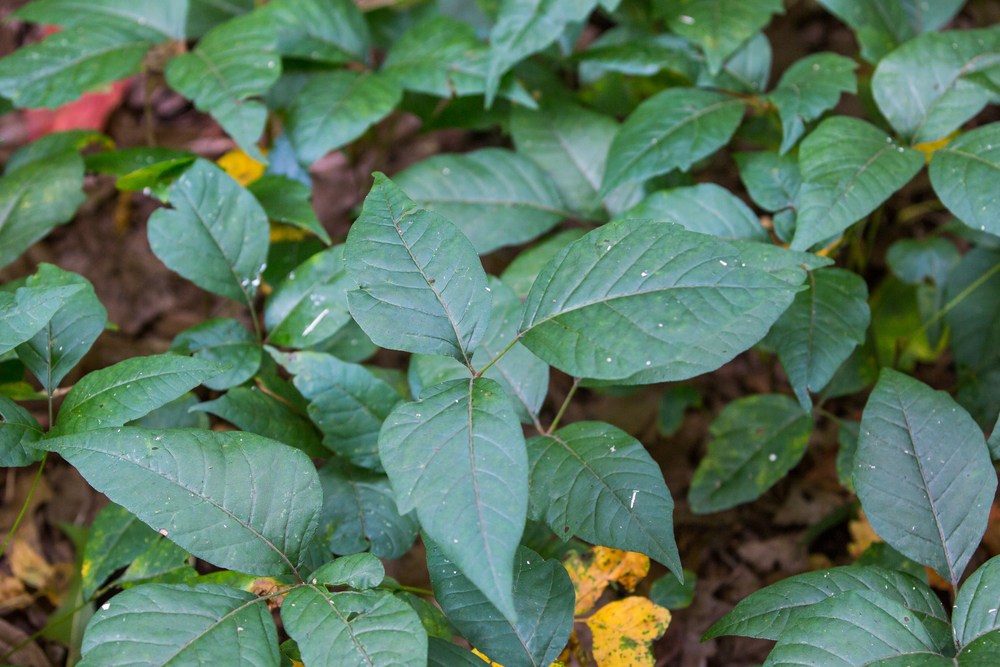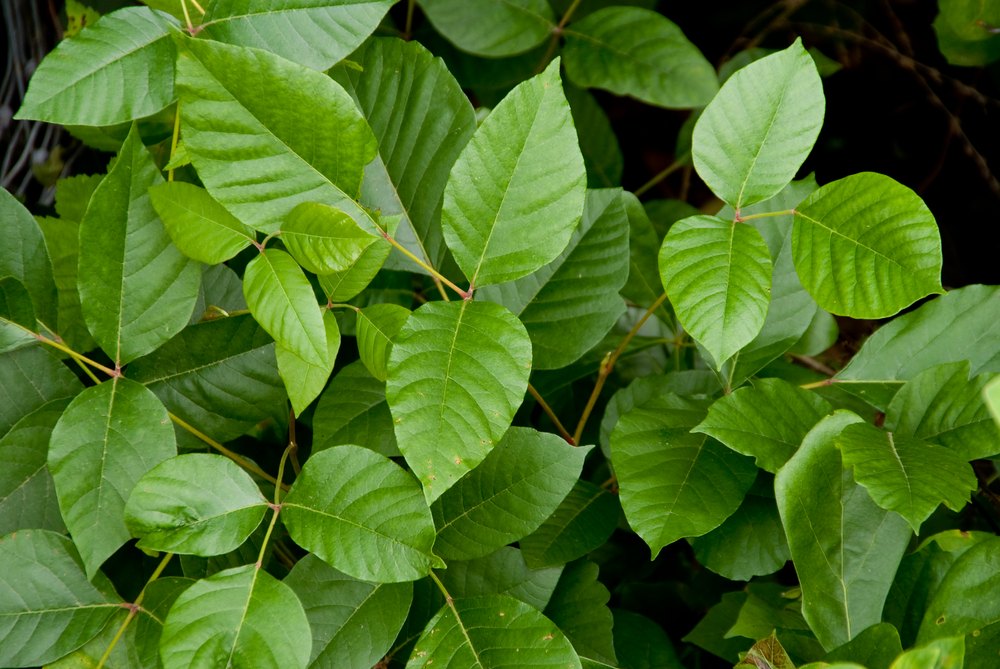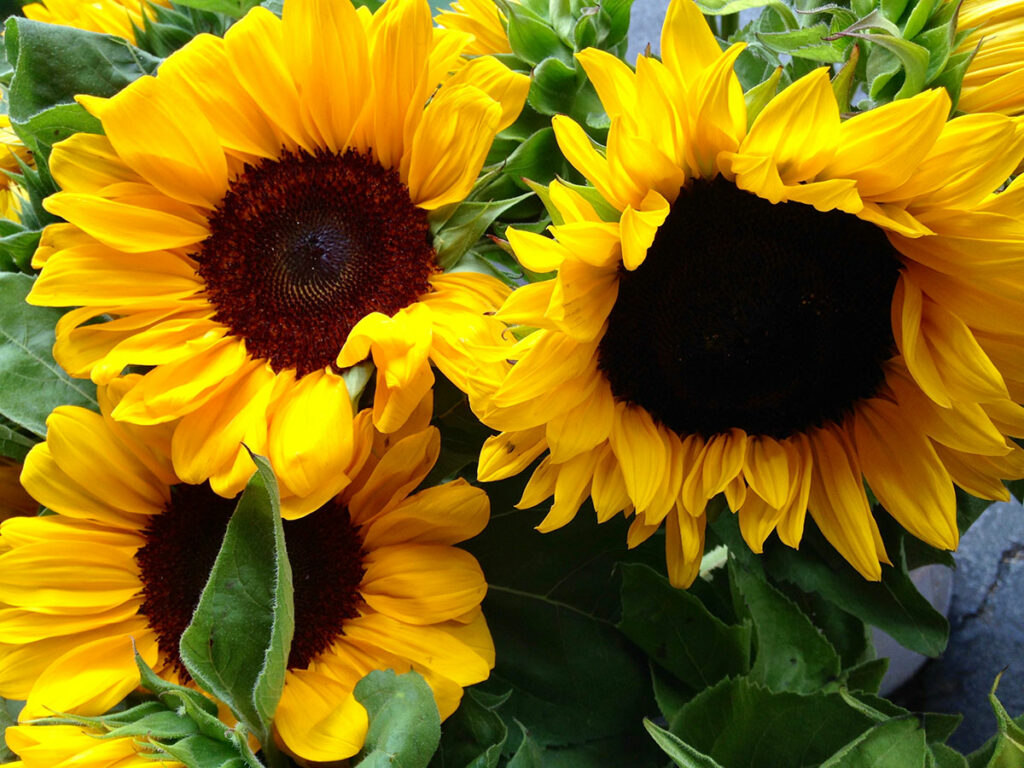
Poison ivy is a common and frustrating garden nuisance that many homeowners face at some point or another.
Its trademark itchy, red rash occurs after coming into contact with the plant’s toxic oil, known as urushiol, and anyone familiar with poison ivy knows what a pain it can be to handle.
On top of being a skin irritant, poison ivy is invasive and can quickly spread, overtaking your garden if not dealt with swiftly and effectively.
Fortunately, there are steps you can take to remove poison ivy from your garden safely and without causing damage to other plants or putting yourself in harm’s way. You don’t have to be an experienced gardener to get rid of this pesky plant – a little determination and a few key tools can go a long way in ridding your garden of poison ivy and keeping it from returning.
In this article, we’ll explore the methods and precautions necessary to remove this unwanted visitor from your garden, so you can get back to enjoying your outdoor space without the fear of a nasty rash.
Key Takeaways
- Learn to identify poison ivy and recognize its symptoms
- Take preventive measures, gather essential tools, and follow a step-by-step removal guide
- Seek professional help if necessary and maintain post-removal care to prevent regrowth
Understanding Poison Ivy

Poison ivy (Toxicodendron radicans) is a plant commonly found in gardens and various outdoor areas. It’s known for causing an itchy, sometimes severe, rash on those who come in contact with it. Learning to identify and control this plant is essential for maintaining a safe and pleasant garden.
One way to recognize poison ivy is by its leaves. They typically grow in groups of three with a glossy or matte finish, depending on the plant’s age and environmental conditions. The edges of the leaves can be either smooth or toothed. The plant’s green leaves often blend into the surrounding vegetation, making it challenging to spot, particularly during spring and summer.
In the fall, poison ivy leaves turn attractive shades of yellow, orange, or red, but don’t be lured by their beauty! Besides the leaves, poison ivy also has hairy, rope-like vines that grow on trees and other supports. It may develop greenish-white berries, which birds and animals eat and disperse the seeds – thus increasing the plant’s prevalence.
Note: It is vital to remember that nearly every part of the poison ivy plant, including leaves, stem, root, and berries, contains the allergenic oil called urushiol. When people come in contact with it, a rash or blisters may develop within 12 to 72 hours.
Now that you’re familiar with identifying poison ivy, the next part is eliminating it from your garden. Ensure you always wear protective clothing such as gloves, long pants, and long sleeves when dealing with poison ivy to minimize skin exposure to the plant. Some methods to get rid of poison ivy from your garden include:
- Hand-pulling: Physically remove the plant and its roots from the ground. Dispose of the plant material in a sealed bag, and don’t touch it without gloves.
- Smothering: Cover the area with a thick layer of cardboard or multiple layers of newspaper, then cover them with mulch. This method deprives the plant of sunlight and air, eventually killing it.
- Herbicides: Use a selective herbicide designed for poison ivy. Follow the label instructions carefully and avoid spraying on windy days to prevent unintended harm to other plants.
Remember that it may take time and persistence to entirely eradicate poison ivy from your garden. Be patient, and always take necessary precautions when dealing with this troublesome plant.
Preventive Measures

Creating a barrier between your garden and nearby poison ivy infestations is a simple and effective way to prevent its invasion. Planting a row of dense, non-invasive shrubs can create a natural fence, which helps in reducing the chances of poison ivy entering your garden. Regularly inspecting the garden’s perimeters and removing any poison ivy plants is also crucial in maintaining a poison ivy-free environment.
Another crucial preventive measure is choosing the right plants for your garden. Native plants are naturally resistant to local pests and diseases and tend to coexist well with each other, reducing the risk of unwanted plants like poison ivy from taking over. Selecting plants that work well together also contributes to healthier soil conditions, which can further help in reducing the chances of poison ivy growth.
Proper gardening techniques are also key in preventing poison ivy invasions. Some tips to follow include:
- Regular weeding: Remove any signs of poison ivy before it has a chance to spread. This is best done in early spring or fall when the plant is weaker and easier to remove.
- Mulching: Applying a layer of organic mulch not only helps in retaining soil moisture but also prevents the germination of poison ivy seeds.
- Mowing: Keep grass and weeds around the garden perimeter short to reduce the habitat for poison ivy seeds and seedlings.
Understanding the conditions that favor poison ivy growth is important in preventing its infestation. Poison ivy thrives in areas with partial sunlight and nutrient-rich soil. Keep your garden clean and free from debris, and prune back any overgrown trees or shrubs to avoid creating the ideal environment for poison ivy.
Make sure to wear protective clothing when working in the garden, especially if you are susceptible to poison ivy rash. Gloves, long sleeves, and pants can protect your skin and minimize contact with any potentially harmful plants in the vicinity.
By implementing these preventive measures, you can safeguard the health of your garden and reduce the risk of poison ivy taking over your beautiful outdoor space.
Tools Required
Gardening Gloves
It’s essential to protect your hands from poison ivy when working in the garden. Investing in a good pair of gardening gloves is a must. Choose gloves made from a thick material, such as leather, to prevent the plant’s oils from coming in contact with your skin.
Long Sleeves and Pants
Safety comes first when dealing with poison ivy, and that means wearing long sleeves and pants to safeguard your arms and legs. Stick to clothing made from thick and tightly woven fabric, like denim or canvas, to minimize your exposure to the plant’s irritating oils.
Weed Puller
A weed puller is a handy tool for removing poison ivy without exposing your skin. Select a tool with a long handle to maintain distance from the plant. Look for options that have a gripping mechanism, allowing for easy extraction.
Garbage Bags
After removing poison ivy from your garden, you’ll need garbage bags to dispose of the plants properly. Use thick, puncture-resistant bags to contain the plants and prevent them from spreading their oils to other surfaces.
Remember to be cautious throughout the entire process and wash all tools and clothing thoroughly once the poison ivy has been removed from the garden.
Step-by-Step Removal Guide

Identifying the Poison Ivy
Before attempting to remove poison ivy from your garden, you’ll need to identify it properly. Here are the common characteristics to look for:
- Leaves: The plant has leaves with three leaflets, often shiny with smooth or slightly notched edges.
- Stems: The vines have a hairy appearance and may cling to other plants or structures.
- Berries: Greenish-white berries may be present in clusters, especially in late summer and fall.
Use a Weed Puller
To remove poison ivy without using chemicals, you can use a weed puller tool. Follow these steps:
- Wear protective clothing, such as long-sleeved shirts, long pants, gloves, and boots.
- Insert the weed puller into the ground at the base of the poison ivy plant.
- Pull or twist the weed puller handle to extract the plant, including the roots, from the ground.
- Complete the process by removing all visible plant material and disposing of it properly.
Disposal of the Plant
Proper disposal of poison ivy is important to prevent further skin irritation and the spread of the plant. Consider the following guidelines:
- Do not compost poison ivy plants, as this can allow the plants to regrow.
- Place the plants in a sealed plastic bag and then in your garden waste bin.
- Do not burn poison ivy, as the smoke can cause severe respiratory problems.
Cleaning Up After Removal
Once the poison ivy has been removed, follow these steps to clean up and minimize the risk of further exposure:
- Wash your tools and clothing with soap and water to remove any lingering plant oils that can cause irritation.
- Wash your hands and any exposed skin using a special poison ivy wash or rubbing alcohol.
- Monitor the area for regrowth, and promptly remove any new poison ivy plants to prevent them from becoming established.
Post-Removal Care
After successfully removing poison ivy from your garden, it’s important to take some precautions and steps to ensure it doesn’t return and to protect yourself from any lingering irritants.
Firstly, never burn poison ivy. If you’ve cleared the poison ivy plants, dispose of them properly in a sealed bag. Burning the plants can release the toxic oil, urushiol, into the air and lead to severe respiratory problems.
Now, let’s talk about some post-removal care steps:
- Clean your garden tools: After using tools to remove poison ivy, be sure to clean them thoroughly to remove any traces of urushiol. A solution of warm water and dish soap or rubbing alcohol can be used to clean tools.
- Wash your clothing: If you wore protective clothing during the removal process, immediately wash your clothes separately from other laundry to prevent the spread of urushiol.
- Monitor the area: Keep an eye on the area where the poison ivy was located. Poison ivy can regrow from remaining roots, so vigilance is required to spot new growth and remove it promptly.
- Plant ground cover: Planting a dense ground cover can help minimize the chances of poison ivy returning. Some good choices include native grasses, ferns or low-growing flowering plants.
- Prevent skin irritation: If you came into contact with poison ivy or suspect contact with urushiol, wash your skin with cold water and soap as soon as possible. Over-the-counter creams and medications can help with the symptoms of poison ivy rash, but always consult your healthcare provider if the irritation persists.
By following these post-removal care tips, you can lessen the likelihood of poison ivy returning to your garden and manage any possible skin irritation.
Professional Help

When dealing with poison ivy in your garden, contacting a professional might be the best option. Trained and experienced specialists have the necessary tools and techniques to remove poison ivy safely. They are also aware of the precautions to take to prevent the spread of urushiol, the oil that causes skin irritation.
Licensed Landscapers: These experts are familiar with various plant species and can quickly identify and remove poison ivy from your garden. They follow proper safety procedures to ensure that the plant is removed without causing harm to the individual or other plants in your garden.
Pest Control Companies: Some pest control companies offer poison ivy removal services. These companies often use chemicals to eradicate the plants without disturbing the surrounding ecosystem. It’s essential to inquire about their approach to ensure that it aligns with your preferences.
Tree Care Services: Arborists and tree care professionals regularly encounter poison ivy when maintaining trees and shrubs. They can help you remove poison ivy vines growing on trees or wooden structures, taking special care not to damage the supporting organisms.
Before hiring a professional, remember to:
- Ask for referrals: Talk to friends, family, or neighbors to see if they have used a service that they can recommend.
- Check for proper licensing and insurance: Ensure that the company you hire is fully licensed and insured to protect you and your property in case of accidents.
- Get multiple quotes: Compare the prices and services offered by various professionals to make an informed decision.
- Enquire about follow-up services: Some companies might offer follow-up visits to ensure that poison ivy doesn’t regrow.
By seeking professional help, you can ensure that poison ivy is safely and effectively removed from your garden, allowing you to enjoy a lush, itch-free space.
Conclusion
In conclusion, removing poison ivy from your garden can be a relatively simple process if you follow the right steps. First, always prioritize safety by wearing protective clothing and gear. Try to identify the plant thoroughly and understand its growth pattern.
Choose your preferred method for elimination, be it manual removal, smothering or using a chemical herbicide. With manual removal, make sure to dig up the entire root system to prevent regrowth. Smothering is a more natural approach, using barriers like cardboard, plastic, or thick mulch to deprive the plant of sunlight and water. Chemical herbicides can be fast-acting but must be used cautiously to avoid harm to other plants, animals, and the environment.
Keep a lookout for any signs of regrowth and be proactive in addressing them. Remember, persistence is key when it comes to eradicating this notorious weed from your garden. Lastly, always dispose of the poison ivy properly to avoid unintentional spreading or exposure.
By following these guidelines, you’ll be well on your way to a poison ivy-free garden, and you can enjoy your outdoor space with peace of mind.













